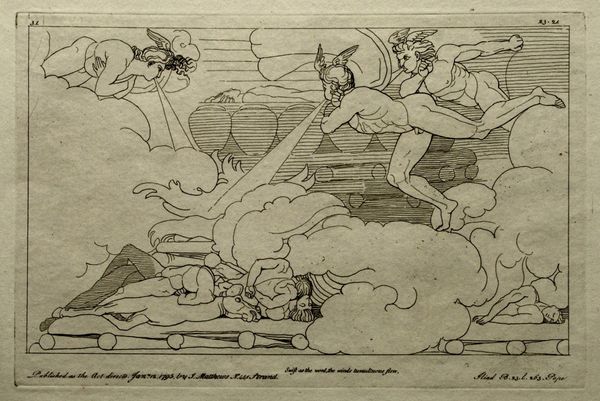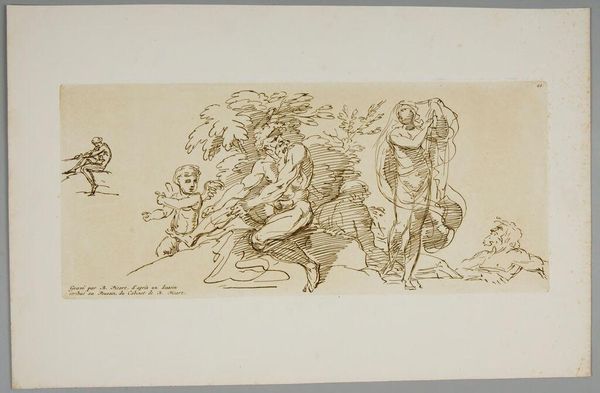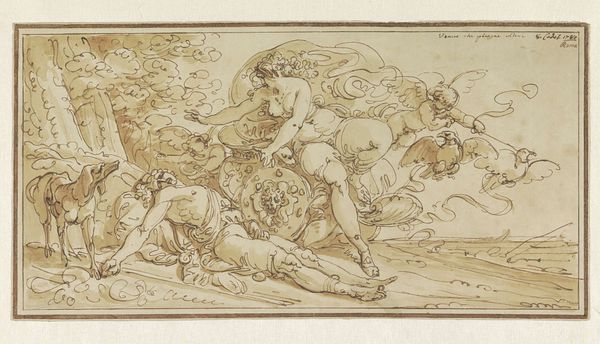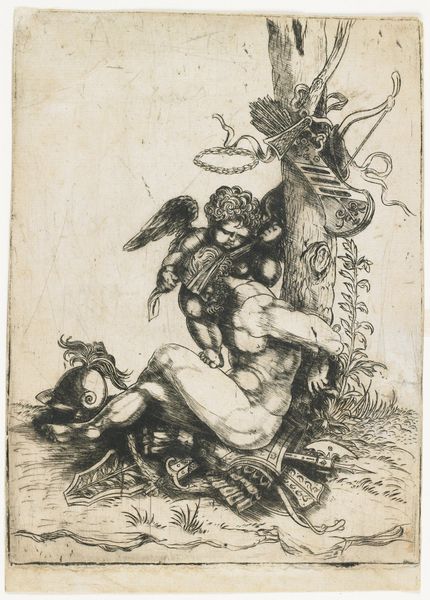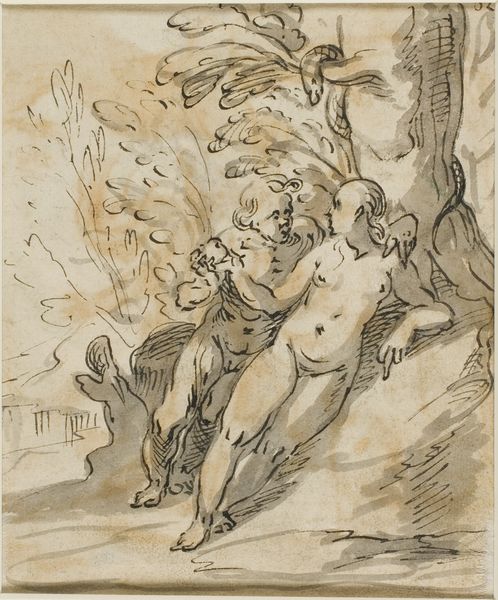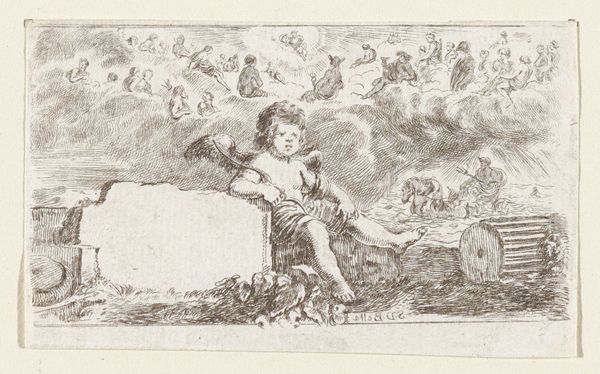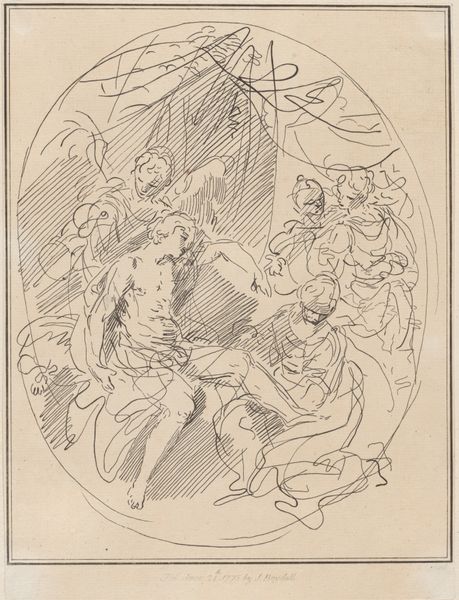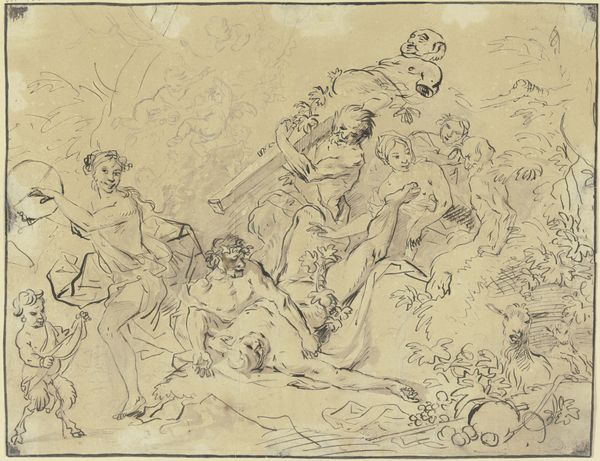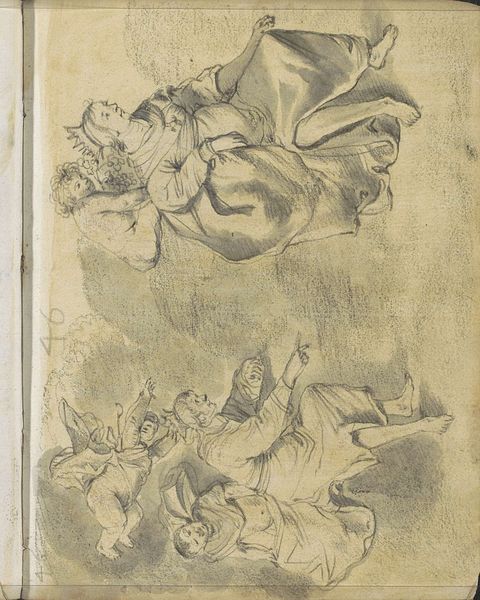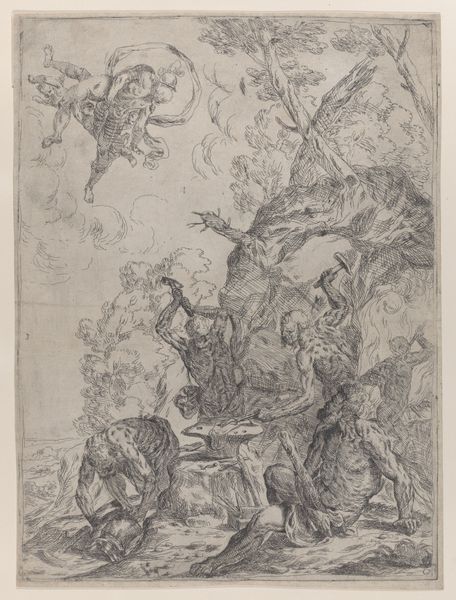
drawing, ink
#
portrait
#
drawing
#
baroque
#
animal
#
dog
#
figuration
#
ink
Dimensions: height 174 mm, width 202 mm
Copyright: Rijks Museum: Open Domain
Curator: At first glance, it feels...whimsical, yet also unfinished? The figures seem to emerge from a hazy ground. Editor: Indeed. We are looking at "Amor als jager met honden", or "Cupid as a hunter with dogs", an ink drawing attributed to Antoine Sallaert, made sometime between 1590 and 1650. Note the loose, expressive linework—quite typical of baroque drafts. Curator: The lines are indeed active; see how Sallaert captures light and shadow with just a few confident strokes, mostly with an ink wash. The Cupid figure, perched atop the pack of hounds, is quite central. Notice the instrument he carries? Some sort of musical horn or hunting tool perhaps, playfully positioned. Editor: For sure. The drawing looks as if it could be preparatory; this handling of materials emphasizes production—one imagines it rapidly executed. Think, the readily available ink and the paper as commodity. How might a patron's expectations, and even Sallaert's economic state at the time, affected its creation? Curator: It also shows a master at work—compositionally, it's rather engaging. The circular arrangement directs the eye smoothly throughout. Editor: But look at the relationship between art and labor. Sallaert’s status allowed the time for this drawing to come into existence. Its preservation depended then, as now, on particular power structures. The materials alone, think of ink production and trade. This resonates more clearly than just subject and artist. Curator: The tonal range here is striking – the interplay of light and shadow to generate a sense of movement through a single color. But returning to the visual for a second... the dogs, while realistically portrayed, also possess this strange expressiveness in the eyes. Their alertness accentuates their role as the companions in the hunting group Editor: Okay, fair. Beyond Sallaert’s technical execution, there's an intersection here. These art objects acted almost as currency among certain levels of society. To acknowledge and see the context enriches this viewing—I feel a connection beyond Cupid and his dogs! Curator: It is true—understanding the conditions of production and viewership provide vital context to how we look at these works. Editor: Absolutely, making it easier to appreciate art beyond pure aesthetics.
Comments
No comments
Be the first to comment and join the conversation on the ultimate creative platform.

